The UK government has confirmed that the Royal Navy’s next-generation SSNR-class attack submarines will be operational by the late 2030s, replacing the current Astute-class, according to a response from Defence Minister Luke Pollard.
This early commitment to the SSNR timeline comes ahead of the Strategic Defence Review, signalling the project’s priority.
Responding to a question from Conservative MP Mark Francois regarding the expected Initial Operating Capability date, Pollard stated:
“The Royal Navy’s submersible ship nuclear AUKUS submarines will be operational from the late 2030s, replacing the current Astute Class.”
The SSNR/AUKUS clas
The UK’s upcoming fleet of submarines, the SSN-AUKUS, promises to push the boundaries of naval warfare when it enters service in the late 2030s.
This new class of nuclear-powered attack submarines, developed in partnership with the U.S and Australia under the AUKUS security pact, is set to replace the UK’s Astute-class and Australia’s Collins-class submarines.
Originally conceived as the UK’s Astute-class replacement programme, named the Submersible Ship Nuclear Replacement (SSNR), the SSN-AUKUS project took on a new dimension in March 2023 when Australia joined the effort.
This expansion incorporated advanced US technology into the design, making the SSN-AUKUS a symbol of trilateral collaboration between the UK, US, and Australia.
From a technical standpoint, the SSN-AUKUS submarines will be a big change in capability. Powered by Rolls-Royce’s state-of-the-art pressurised water reactors (PWR), these submarines will be larger and more versatile than their predecessors. With a displacement of over 10,000 tonnes, they will have significant space for advanced systems, allowing for longer missions and greater operational effectiveness.
Nuclear propulsion system will enable them to operate underwater for extended periods, crucial for long-range operations in contested waters.
One of the key upgrades in the SSN-AUKUS design is the likely incorporation of a vertical launch system (VLS) for land-attack missiles. Unlike previous Royal Navy submarines, which launch missiles via torpedo tubes, the VLS will allow for quicker and more flexible missile launches.
This capability will bring the SSN-AUKUS in line with US submarines, enhancing interoperability between the UK and US navies. This system will also allow the submarines to carry and deploy advanced long-range cruise missiles, adding a new dimension to their offensive potential.
Construction of the SSN-AUKUS submarines will be a monumental task. In the UK, BAE Systems will lead the effort, building the first submarines at their Barrow-in-Furness shipyard, with construction expected to begin in the late 2020s. To support this, the workforce at Barrow will expand from 10,000 to 17,000. Meanwhile, Australia is planning to build five SSN-AUKUS submarines at the Osborne Naval Shipyard, with new facilities being developed to support their construction.
Australia is also acquiring three Virginia-class submarines from the United States as a stopgap measure in case there are delays with the SSN-AUKUS programme.
The SSN-AUKUS submarines will incorporate some of the most advanced technology in the world. These boats will share critical systems with the US Virginia-class submarines, including propulsion plant systems, combat systems, and a common vertical launch system.
This level of integration will ensure seamless cooperation between the UK, US, and Australian navies, allowing for joint operations and the sharing of technical expertise. The submarines will also feature the evolved AN/BYG-1 Combat Management System and be armed with the potent Mk-48 heavyweight torpedoes, ensuring they remain at the cutting edge of undersea warfare.
Beyond their military capabilities, the SSN-AUKUS project is set to have a significant economic impact. In addition to the thousands of jobs being created in the UK, Australia is investing AU$4.6 billion (£2.4 billion) to help expand Rolls-Royce’s Derby facility, which will manufacture key components for the submarines’ nuclear reactors.


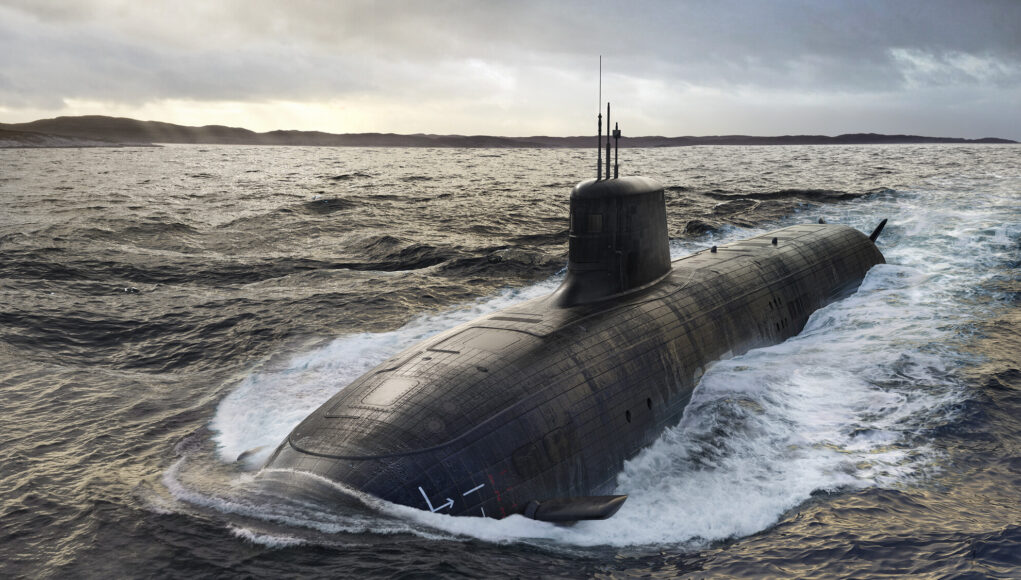
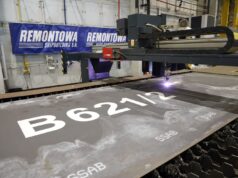
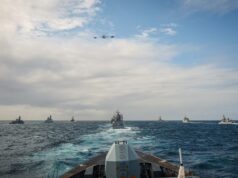

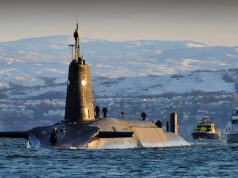

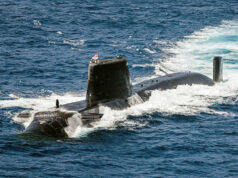

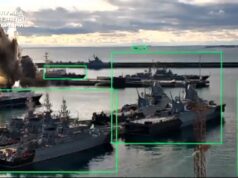

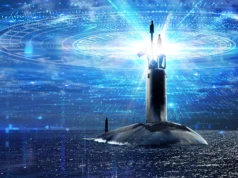

I wonder if the massive increase in staff at Barrow will see the Dreadnaught program sped up in delivery. If not I have to ask what the extra 7000 staff going to do for the next 15 years.
the size of the manufacturing areas would need be expanded. all of the space needed is currently taken up with the new’boomers’
There are some major challenges with the extra 7000 staff, not least of which is convincing 7000 people to move to Barrow and build houses for said 7000 people.
This blasted review will screw the UK defence, possibly for years if it is mindless due to the fog of fiscal panic. The last time this fog descended was Under Camron who with the stroke of a pen ripped the Harrier fleet to shreds and signaled the end of the Invincable Class carriers leaving the country exposed. The Government say AUKUS is safe and that is due to it being a three-way decision. However, there are rumours that CH3 will go in preference to buying Leopard 2 and that there will be a slowdown in the Army’s new armour. All this in the face of a global crisis of a proportion not seen since WW2!!
Buying Leo2 would cost much, much more than the CH3 program. I’d say 30+% of the CH3 program budget would have been expended getting to prototype! So how many tanks can you buy for £600m? Not many.
Also wouldn’t be British. So would conflict with industrial policy.
The question is likely to be
– do we make more CH3 hulls; or
– do we buy more of something else?
wed have more if we hadn’t given away some of our own sorely needed tanks to the black hole of the Ukrainians constant begging for more and more. equipment from the west. I’ve nothing but admiration for the Ukrainian people, but I think that unless substantial gains are made with what they have, then a slow reduction in hardware would be correct.
MBT’s are becoming a niche capability as the Army configures itself to deploy at Brigade level.
I would be surprised if they stick to 148 Chally 3 and don’t try to reduce the order further…
No one actually believes the Army would deploy a division anymore, in anything short of general war.
The numbers of regulars are forcast to fall below 70,000 in the next few years and without serous investment, will likely continue to shrink toward 60,000 by the early 2030’s.
SDSR25 will be interesting, will Labour arrest the decline and restore mass??
I think AUKUS, the dire need to expand the RN and regenerate the RFA, F35B batch 2, and GCAP will absorb much of any additional funding…
Expect more, “leaner, agile and more high tech” nonsense re the Army, as its shrunk to match reduced orders.
John Healey told Parliament yesterday (Tuesday) that the strength of the British Army was expected to fall below 70,000 next year (2025).
That’s depressing, so we’ve crashed through the already pathetically small 73,000!!
I see nothing to stop a slide towards 60,000 unless the handbrake is put on somehow..
SDSR 2010 put in train a reduction in the strength of the British Army of about 3000 regulars a year, and this was confirmed in 2020 and reconfirmed in 2022 – despite the war in Ukraine. The resulting decades long story of constant cuts and disbanded regiments has become so embedded that the Army is now in a vicious circle of self-perpetuating decline. These days, no Careers Advisor will dare suggest to a young man or woman a career in the Army or the other forces. My own children thought it was a joke when I asked if they had considered it.
Based on current trends, the British Army will reach zero personnel by 2036.
That’s very sad 😔 ..
I fully expect 60,000 by the early 2030’s, unless there’s a dramatic intervention of some sort to stem the loss and rebuild mass.
We can’t of course actually recruit that 73,000, so in reality it’s not a cut. The army needs to be clear on what its purpose is and the size it needs to be to deliver that, and reduce the number of cap badges to deliver it. Why for example do we need to have an army that is bigger than 60,000? The army seems to want to also recreate capabilities we already have (e.g. forming ‘Rangers’ at the same time as reducing our Royal Marines, who already do that role really well).
Even with these small numbers, the reality is most of it is Light Infantry, lacking in protected mobility, lethality and fires, and would be toast in a proper conflict. Would it be better that 60,000 soldiers, but all of them in protected vehicles, with plenty of organic aviation and artillery.
I agree but there has been some talk of axing the CH3. If we did buy L2’s cancellation cost would flatten any savings?
Talk? Where? Source?
Ch3 is a bargin, why buy something even more expensive?
Forces News a few days ago.
If there is a global crisis of a proportion not seen since WW2, then it is probably a good idea to have a defence review.
We are certainly not currently equipped to handle such a thing, and a lot of our fundamental assumptions may now be flawed.
For instance, I am quite confident that in the previous defence review very little consideration was given to the idea of British territory being under geniune threat from conventional weapons.
Given recent events, that thinking is now very outdated and the Sovereign Base Areas on Cyprus are now at risk.
I would say that anti air defence should be considered for any base British forces are even temporarely.
Your point makes eminent sense but defence reviews have always led to cutbacks and programme cancellations. Such reviews inevitably slow down the daily processes and delay, plus identify errors and poor admin, which is a good thing yet, that is how the civil service works. If current drone and compact missile systems grow, in ten years the UK mainland could be under threat let alone Cyprus.
As i understood it CR3 was more of a stop gap,there were long term plans beyond it which might have considered Leopard 2 or similar.
as a former government union official, but not a labour supporter I asked the home secretary that places like the the prison officers tree had been cut to the trunk, what would be done if the trees fell over. it won’t surprise you if 5 say that he didn’t have an answer our armed forces are in the same position.
An Israeli and Iranian war plus a Trump victory could radically change the current UK defence policies.
Firstly it’s just HMG stating the obvious and putting our partners minds at rest with the upcoming SDR.
Secondly there is no mention of numbers, which is only logical as numbers depend on affordability, that depends on the spec and how that works out cost wise. But general rule of thumb is to keep costs low per hull you need to build at the most efficient build rate possible.
So in other words we will not know how many the RN get till the overall numbers for the partners to be built is known. It’s Chicken and Egg time and a lot also depend on 5th November and how that effects the US ability to provide Virginia class SSN to Australia.
Yup, unfortunately a lot of Labour, even ministers, still approach it like student politics with shrieking and name calling.
We saw that with the DP World press releases.
In that issue everyone across the political spectrum agreed that what DP World did was wrong.
Solution change the law so it can’t happen again. Don’t insult them. They are Arab autocrats who hate that kind of thing.
The law is being changed next?
I would imagine the SSN-Aukus would also have some variation of a mission bay – a large space that can be used for the operation of UUVs?
Love how these announcements contradict themselves. Mk48 torpedoes in the same sentence as cutting edge of undersea warfare. Would be happier if it said Spearfish.
Should be accelerated to increase boat numbers now (given additional Astutes is not possible).
Haven’t seen any real progress on the second construction facility required either.
I don’t think you will see a 2nd Assembly hall here in UK ! The DDH is perfectly adequate for what we need and can produce faster if funded to do so. The Australians intend to assemble their own with some prefabrication here. Australia already has a very well developed steel industry and can build their own hull sections just as they did for the Collins class. FYI the Swedish sections were initially rejected due to not meeting RAN weld standards 🤔
If I were a betting man I’d say the complete reactor and reactor hull section will be built here and shipped over.
That’s too late in times of timeframe. Late 2030s is not going to be soon enough.
We need these ships sooner rather than later. First in class needed around 2030-2031 timeframe.
Seems the UK will be stuck with just 7 SSNs for a considerable period of time. If Aukus won’t be ready by late 2030s then there clearly is a requirement and very very strong argument for just getting a couple more astute class added on.
With the Dreadnought program in full flow, where in the U.K. do you suggest can be up to building SSNs within the next 5years and able to deliver shortly after that? As for more Astutes, given the timeframe for long lead items and the and of the production run, how long do you think it would take to get any new batch started let alone built?
I am completely fed up saying this so I’ll try Trump style. THERE CAN BE NO MORE ASTUTES BUILT, NOT NOW NOT EVER.
Firstly Barrow is now full on building Dreadnought so no room to build anything more till we are at least half way through building any.
Secondly the PWR2 Reactor has been out of production for about 8 years and no more can be built as RR here in Derby are now busy building PWR3 which is much bigger and will not fit in an Astute hull. The facilities have been configured for doing that and the massive amount of Australian money is being spent so we can build more in as efficient a manner as possible.
THERE IS NO GOING BACK !
Plus people seem to forget that the gestation and construction timeline has been so long for Astute that by the time Agincourt is commissioned it’ll be a 25 year old design!
Calm mate. Frustrating isn’t it.
Exactly 💯
If we need more subs before late 2030s they can’t be Asutes. They’d have to be AIPs built in a allied country: Japan perhaps. For which we have no money, not enough submariners and a complete lack of political will.
Astute is a closed book, PWR2 is a dated reactor and it’s not possible to produce it anymore.
RR is now in full PRW3 production for Dreadnought and an update of this reactor will also power AUKUS.
One of the many things that should make AUKUS affordable, is the reactor plant should have the kinks fully worked out and a large, well trained, well motivated design and manufacturing workforce will be in place a Barrow.
The UK has not finished building it’s remaining Subs ordered, and getting existing subs out to sea!
You need to learn to walk before you can run!
Try to remember to include the supporting infrastructure in your plans this time…
No choice really with this one. Otherwise just upset the Aussies’ and the U.S.
Needs a speed up really. The U.K. needs more submarines. Australia needs them asap. Canada needs a replacement.
Offering BAE a big contract of say 12 for £20b with delivery aimed for 2032 until 2045. Obviously the money isn’t all at once and may need refining, increased etc but the commitment is there.
Canada has barely started its replacement program and so far has made no major sign of going nuclear and hell their budget will be stretched with the planned SSK’s let alone SSN. But more to the point, again its timeframe issues. the UK’s capacity is focused on the SSBN’s and will be for some time so Barrow is out, the US is hitting its own issues with its Virginia class, and Australia has only started the infrastructure for their SSN’s. How exactly do you suggest the design can be fully finished, and work completely within effectively 7-8 years?
Canada’s sub program has one advantage to the RCN, no domestic production of the subs. The subs will be built abroad, which will be faster than domestic construction. Irving (and other shipbuilders) have dragged out many projects for votes.
The last River class destroyer will be finished in 2050.
Canada has also another naval project to look at which is the replacement of the Kingston Class. That is the elephant in the room now.
I’m out of it now, but I don’t think it will be a singular MOD contract issued the old way for a targeted number but split into Batches. It has to be an integrated end to end project with 2 customers needs in mind. So I’d think it will be more like the US block system where materials, components etc are bought en masse to be supplied to vessels for both countries on an agreed schedule.
The other thing is I wouldn’t be at all surprised if we start to hear about a LOP(R) to extend Astute. It may not be how things were supposed to work but its quickest way to add mass in 15 years time when SSN(A) numbers are ramping up.
I’d lik5 to know how much they are paying for each boat it could be, that t5 u.k could do a similar thing to increase quite rapidly increase the size of our silent service. these are excellent vessels Already built. and coming second hand would 5 far cheaper than sAy wishing we’d had another couple of astutes.
As an ex-army bod, I am always envious at how the other two services do their long term equipment planning. The RAF seems to be on course for their Future Combat Air System (Tempest) project to continue to run whilst still getting great updates to Typhoon and being at an early stage in operation of F-35B…and the RN is getting its future sub project green-lit well before before full delivery of the Astute programme.
If the army was like this, then planning for successors to CR3, Boxer and Ajax would be well underway!
On another note, given that future equipment fleet size always reduce, how many SSNRs will we get – less than 7?
Graham like everything it will come down to the oa cost per boat vs the available budget. So they need the design finished before they have a clue about a unit cost, but that’s also driven by the numbers ordered.
So I wouldn’t expect anyone to say how many for a couple of years yet, but given the investment that’s going on I’m optimistic that it will be more than the Astutes.
You’re an Engineer so you probably get me when I say that once the project is locked down it’s going to be pretty unique as the nature of the agreement is a very effective check and balance on interfering Politicians.
AUKUS has 2 end customers & 3 supplying nations, each with work share and supply contracts. It also has other tiers which all 3 countries want to be actively involved in.
Political interference by any party comes at a very high price.
For example given that each SSN(A) has a life of 30 years and if numbers are locked down as 12 RN and 8 RAN that’s about the optimum number for an efficient cost effective delivery schedule of 1 boat per 15 months (that leaves a gap at the end to replace the 4 RN Dreadnought SSBN).
But say the U.K. PM in 12 years time decides to cancel 2/4 of the RN boats, fewer boats not only causes issues with the UK supply chain but it jacks up the price per boat.
Australia and US would quite rightly go nuts because it hits their supply chains and increases the cost of the RAN boats.
Whats not to like ?🤔
Well thats a good bit of propaganda eh? Solve the Astute at sea problem first before spouting about a future this or that. Honest, another chapter in the comedy of errors.
ji hope we can commit to having more than the number of astutes we have.now